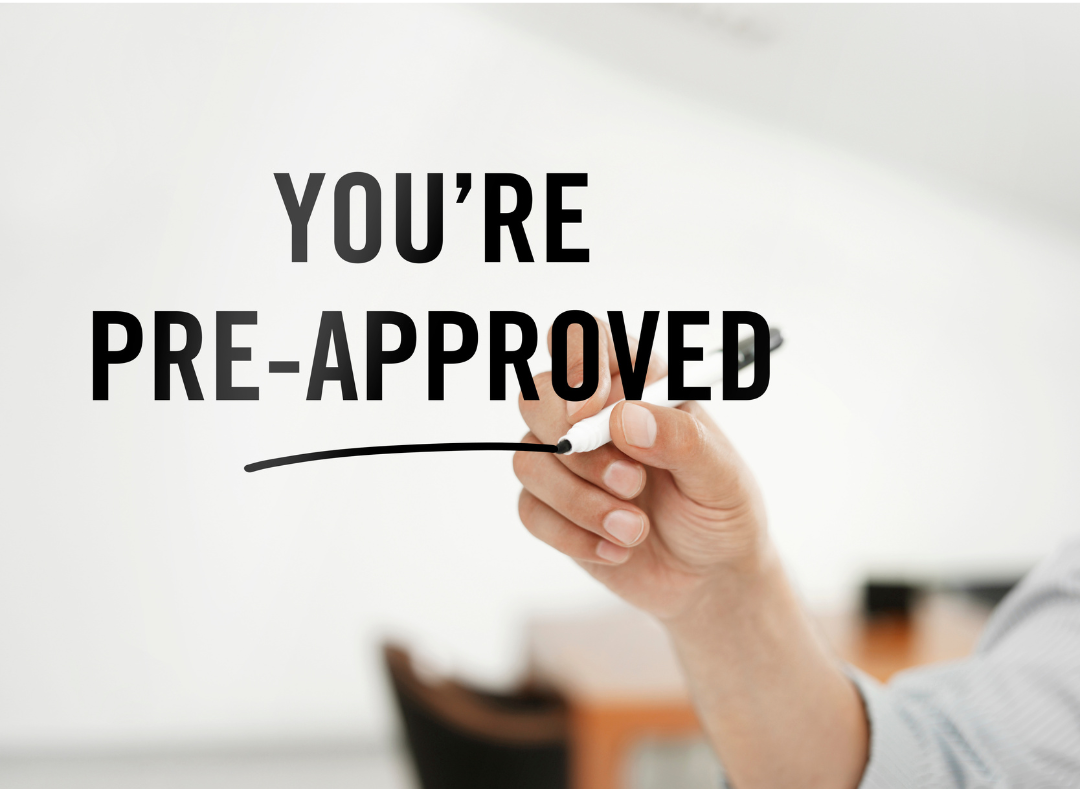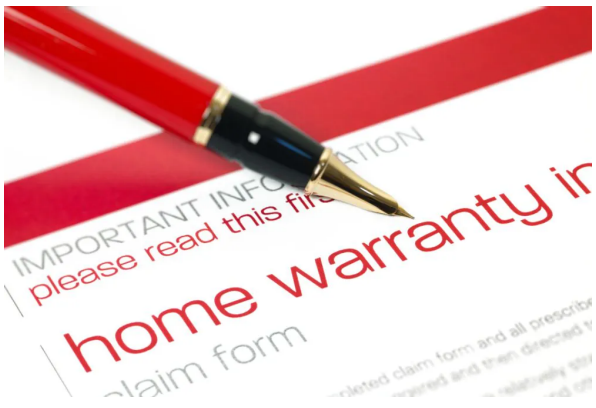Benefits of Living in a Walkable Neighborhood
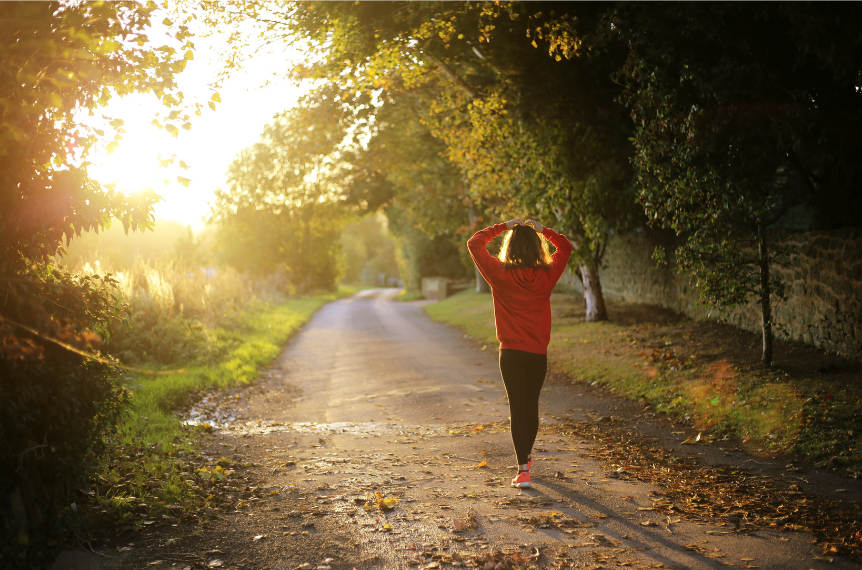
As homebuyers increasingly seek communities that enhance their quality of life, walkable neighborhoods have become a top priority. These areas, designed with convenience and accessibility in mind, offer a variety of advantages that extend beyond just being close to shops or cafes.
1. Health and Wellness
Walkable neighborhoods encourage an active lifestyle. By having amenities like parks, restaurants, and grocery stores within walking distance, residents naturally incorporate physical activity into their daily routines. Walking helps boost cardiovascular health, reduces stress, and promotes mental well-being.
2. Environmental Impact
Living in a walkable neighborhood reduces reliance on cars, decreasing greenhouse gas emissions and contributing to a cleaner environment. With less need for daily driving, buyers can also save on fuel costs.
3. Community Engagement
Walkable areas foster a sense of community. When people walk more and spend time in public spaces, there are greater opportunities for casual interactions with neighbors, which can lead to stronger social connections and a sense of belonging.
4. Convenience and Time-Saving
Having essential services such as schools, shops, and restaurants within walking distance saves time and simplifies daily errands. This convenience enhances the overall quality of life, as it eliminates the need for long commutes and creates more opportunities for leisure and relaxation.
In conclusion, walkable neighborhoods offer a range of benefits, from promoting healthier lifestyles to fostering community spirit. For homebuyers seeking convenience, sustainability, and a high quality of life, walkability is a key feature to consider.
Our Real Estate professionals are knowledgeable and ready to assist you with your buying or selling needs. Call Us Today at 757-229-9595 or email us at info@cbtraditions.com.
The Benefits of Home Renovations For Sellers
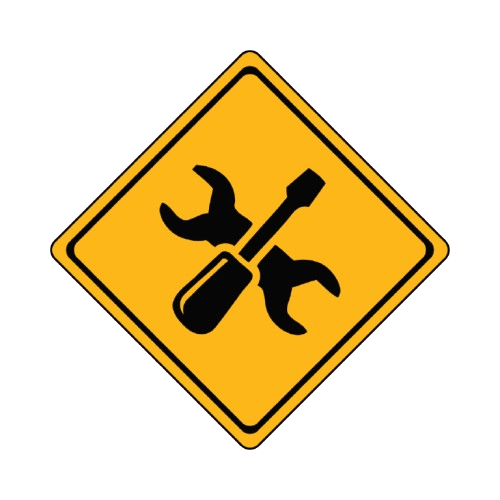
Home renovations before selling can be a smart investment, providing several key benefits. These renovations often help increase the sale price, speed up the selling process, and attract more buyers. Here’s a detailed look at the benefits of home renovations before selling:
1. Increase Property Value
- Higher asking price: Well-executed renovations can significantly boost your home’s market value. Buyers are often willing to pay a premium for modernized spaces like updated kitchens, bathrooms, and energy-efficient systems.
- Competitive advantage: A newly renovated home will stand out in the market, especially if similar homes in the neighborhood are older or outdated.
- Return on investment (ROI): Many renovations provide a solid return on investment. Kitchens, bathrooms, and curb appeal updates often offer the highest ROI. Even small upgrades can lead to a higher sale price.
2. Faster Sale
- Attract more buyers: A well-renovated home is more appealing to potential buyers, which can increase interest and bring in more offers faster.
- Move-in ready appeal: Buyers, especially first-time homeowners or those with busy lifestyles, prefer homes that don’t require immediate repairs or updates. A freshly renovated home is more attractive to buyers who want to move in without additional work.
- Fewer negotiations: If buyers spot issues or outdated features during their walkthrough, they may request lower offers or demand repairs. By addressing these potential concerns before listing, you reduce the likelihood of drawn-out negotiations.
3. Improve Curb Appeal
- Better first impressions: The exterior of your home is the first thing potential buyers see. Simple renovations like fresh paint, updated landscaping, or a new front door can make a big difference in curb appeal, drawing in more potential buyers.
- Create a welcoming atmosphere: A modernized, clean, and attractive exterior sets the tone for what buyers can expect inside, leading to a more favorable overall impression of the home.
4. Fix Issues Before Inspections
- Avoid last-minute surprises: Renovating your home allows you to fix underlying problems before buyers discover them during the home inspection. This can prevent unexpected issues that could derail a sale.
- Eliminate buyer concerns: Structural issues, old wiring, leaky roofs, or plumbing problems can scare off buyers or lead to price reductions. Handling these repairs upfront builds buyer confidence and smooths the selling process.
5. Appeal to Modern Preferences
- Meet buyer expectations: Today’s buyers often prefer open floor plans, energy-efficient features, modern kitchens, and updated bathrooms. Renovations allow you to align your home with current market trends and appeal to the largest group of buyers.
- Neutralize design choices: Updating dated or overly personal design elements with neutral, modern finishes can make your home more appealing to a broader audience. Neutral designs allow potential buyers to envision their own style in the home.
6. Increase Energy Efficiency
- Energy-saving upgrades: Installing energy-efficient windows, appliances, or insulation not only reduces energy costs but also adds value to your home. Buyers are increasingly interested in energy-saving features that reduce utility bills and have a positive environmental impact.
- Modern, eco-friendly appeal: Eco-conscious buyers may prioritize homes with sustainable features, and showcasing energy-efficient upgrades in your listing can make your home more attractive to this growing segment of buyers.
7. Boost Online Appeal
- Better listing photos: With many buyers starting their search online, attractive photos are crucial. A renovated home, especially with modern finishes and updated spaces, will look more appealing in online listings and can generate more interest.
- Virtual tours and showings: Well-renovated homes also shine in virtual tours, which have become increasingly popular. High-quality finishes, new appliances, and modernized spaces will stand out in 360-degree tours or video walkthroughs.
8. Maximize Use of Space
- Increase functional living areas: Converting unused or underutilized spaces, such as basements or attics, into functional living areas (e.g., an office or guest room) can add significant value and broaden your home’s appeal.
- Create open-concept layouts: Removing unnecessary walls or improving the flow of a home can give it a more spacious and contemporary feel, which is highly desirable in today’s market.
9. Meet Local Market Demands
- Tailor renovations to the market: Strategic renovations can address specific features that are in demand within your local real estate market. For example, in urban areas, modern kitchens or energy-efficient windows may be top priorities, while in suburban areas, updated outdoor living spaces or finished basements may be more desirable.
- Better align with comps: Renovating allows your home to better compete with comparable homes in your area that may already have modern upgrades.
10. Higher Offers and Bidding Wars
- Attract serious buyers: Buyers are more likely to make strong offers on a home that doesn’t require immediate work. This can result in multiple bids or even a bidding war, driving up the final sale price.
- Fewer contingencies: Renovations reduce the need for buyers to request contingencies related to repairs or updates. This makes the transaction smoother and more likely to close on time.
Home renovations before selling your home can provide a high return on investment, attract more buyers, and lead to quicker, higher offers. By making strategic updates and repairs, you can maximize the appeal and value of your home, ensuring a smoother and more profitable sale.
Our Real Estate professionals are knowledgeable and ready to assist you with your buying or selling needs. Call Us Today at 757-229-9595 or email us at info@cbtraditions.com.
Ready, Set, Camera Security
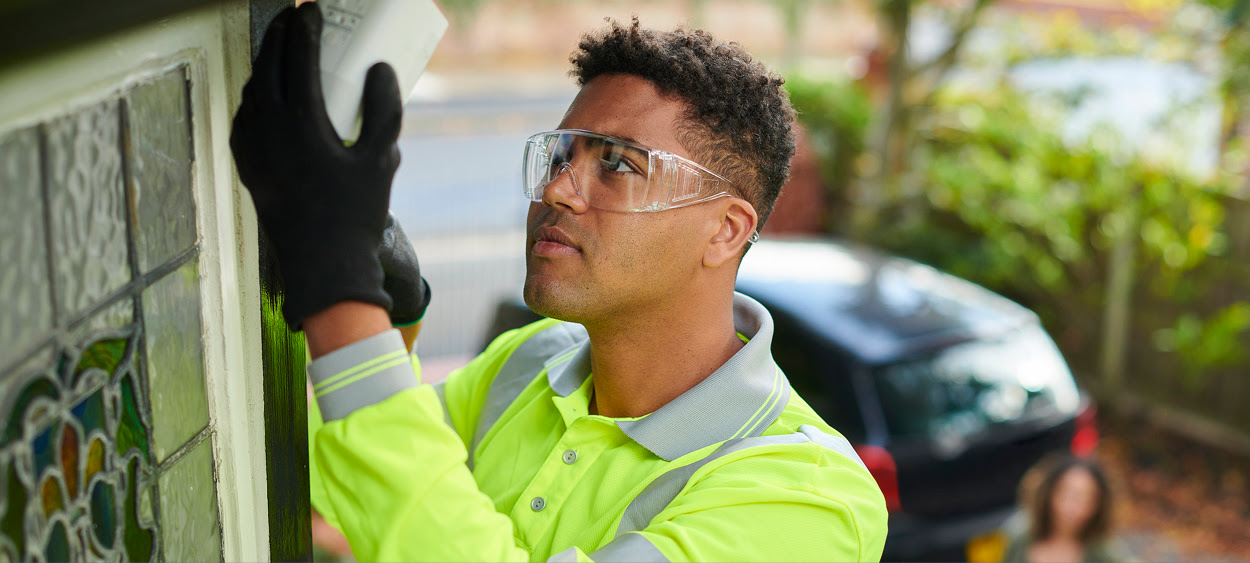
Keep an eye on all that goes on around your home with security cameras that offer the ultimate feedback on real-time and documented footage. Not only do home security cameras deter burglars, they can record important and useful information for police investigations and other items of interest you may not have otherwise known about. Think carefully about what you want and need in a camera: video and audio quality, hardwired or wireless and with or without night vision. Also, consider where you’ll place your camera and the area it will cover. Be sure it’s capturing enough to tell the whole story.
These revealing security measures can be surprisingly affordable, or you can opt to upgrade with units that include even more bells and whistles. Choose from features such as motion detection, Wi-Fi capability, a two-way talking component, cloud storage and weatherproof casing for outdoor cameras. Inside or out, a security camera can open up your eyes to a world of information through its observant lens.
Our Real Estate professionals are knowledgeable and ready to assist you with your buying or selling needs.
Call Us Today!
4 Ways Realtors® Give Back To Their Communities

When it comes to finding the right real estate agent, top of your criteria should be local expertise and a deep understanding of the community. Real estate professionals need to be intimately familiar with the homes, businesses, and the economy in the area to help you buy or sell the perfect Williamsburg, VA real estate property (https://cbtraditions.com/).
However, great real estate professionals (https://cbtraditions.com/directory) should play a deeper role in the local community beyond the buying and selling of homes.
At Coldwell Banker Traditions we believe that giving back to the Williamsburg community is part and parcel of our
responsibility. As people who live in and rely on this amazing community, it’s only right to return the same support that they give us.
Specifically, here are 4 ways your Williamsburg VA real estate agent gives back to the local community:
They support local NGOs and charities
It’s important to work with real estate professionals who are passionate about the community they work in. And one of the ways this love for the community is shown is by taking part in charitable projects and local causes.
Many of our associate brokers or Realtors® have something they advocate for, whether it’s giving the furry citizens at the local animal shelter the best life possible or raising funds for programs that help disenfranchised members of the community. Some work as volunteers at local non-profit and charity organizations.
For example, one of our members is the Committee Chairperson at Habitat for Humanity Peninsula & Greater Williamsburg (https://www.habitatpgw.org/), a nonprofit organization that builds and renovates affordable homes for people in need of decent housing, regardless of background, race, or religion. Find out more about their advocacy here (https://www.habitatpgw.org/advocacy/).
They utilize their wide network of professionals and clients
Brokerages and real estate teams with a large network also use their resources to give fundraising organizations and
donation drives the platform they need to promote their cause. For example, Realtors® who have a huge following on social media often post about calls for donations. Those who write blog posts and content for their websites also write about the community programs they want to support.
Here at Coldwell Banker Traditions, some of our brokers and Realtors® volunteer at Williamsburg Area Meals on Wheels (https://williamsburgmealsonwheels.com/), which provides nutritious meals to vulnerable families in the Williamsburg area. Others are a part of the Kiwanis Club of Williamsburg (https://williamsburgkiwanis.org/), a global organization of volunteers dedicated to improving communities and children’s quality of life. Click on the links to find out more about how you can support these programs.
They sponsor events for a good cause
Local businesses and events are integral to keeping the spirit of community alive, and nobody knows this better than your local Williamsburg VA real estate agent. You’ll often see them attending and sponsoring community events such as farmers markets and local business luncheons. Realtors® also join walks or runs for a cause, raising money for cancer awareness or the local children’s hospital.
Our real estate team supports numerous causes, ranging from historic preservation to affordable housing and medical services. One of these is the Hospice House of Williamsburg (https://williamsburghospice.org/), a charitable organization that provides short-term residential care for end-of-life support. You can learn more about their fundraising (https://williamsburghospice.org/us-2/ways-donate/) and volunteer programs here
(https://williamsburghospice.org/volunteers/overview/).
Some of our Realtors® support Colonial Williamsburg (https://www.colonialwilliamsburg.org/), the largest outdoor living museum in the country. The Colonial Williamsburg Foundation is a not-for-profit educational institution that seeks to not only conserve Williamsburg’s colonial buildings, but also to educate residents and visitors on the city’s rich history. Check out how you can support them here (https://www.colonialwilliamsburg.org/give/other-ways-giving/?from=navgive).
They volunteer at community-based programs and organizations
In between studying local market trends and negotiating the best deal for their clients, real estate professionals also make time to volunteer at community-based programs and organizations.
For example, some real estate agents use their landscaping and property knowledge by volunteering as educators at the JCC Williamsburg Master Gardener Association (https://jccwmg.org/wordpress/), a group of master gardeners who provide public outreach and education programs on sustainable gardening practices. You can read more about their community outreach programs (https://jccwmg.org/wordpress/community-outreach/) and demonstrations here (https://jccwmg.org/wordpress/demonstration-projects/).
Other Realtors® put their great communication skills to use at the Bacon Street Youth and Family Services
(https://baconstreet.org/), a non-profit organization that offers mental health services to teens, young adults, and their families through evidence-based behavioral health and substance use programs. Discover ways to support them here (https://baconstreet.org/get-involved/).
Be a part of the Williamsburg, VA community today
With almost a century’s worth of history in Williamsburg VA and its surrounding communities, our real estate team at Coldwell Banker Traditions (https://cbtraditions.com/about-coldwell-banker-traditions) continues to live by its principles of impeccable client service, family-oriented values, and community commitment.
Our Real Estate professionals are knowledgeable and ready to assist you with your buying or selling needs.
Call Us Today!
Giving Back: 3 Ways You Can Help Your Community While Selling Your Home

Selling your home is always bittersweet. While it serves as the beginning of a new chapter in your life in a newer and better home (https://cbtraditions.com/listings/our-active-listings), it’s also a process of saying goodbye to a house and community that has sheltered you for a long time. If you’re in the process of selling your Williamsburg home, why not use it as an opportunity to give back to the community?
In this home sellers’ guide, we will show you different ways on how you can help your community before selling your home and relocating to a new place:
Donate to your local charity
Decluttering your home can be one of the most overwhelming parts of the home selling process. Whether you’ve lived in your home for a few years or for several decades, there always seems to be a mountain of stuff that you either forgot about, don’t use anymore, or regretted buying.
To paraphrase Marie Kondo, it’s clear that these items don’t spark joy. However, they can spark joy for someone else who needs them. Here are some items in your inventory that you might want to give away to your local charity:
Furniture
If you’re moving to a new home, it’s unlikely that you will get to keep all your furniture. Not only will it make moving out more cumbersome, but there’s also a good chance that it won’t match the interior design of your new home. So, instead of letting them waste away in landfills, you can give them away to affordable housing organizations like Habitat for Humanity ReStore (https://www.habitatpgw.org/restore/).
Clothing
Now is a good time to reorganize your closet. If you haven’t worn that sweater or those jeans in the past three years, then you’re probably not going to even when you move into your new home. Donate them instead at clothing-specific charities like the Salvation Army or Goodwill’s donation centers (https://www.goodwill.org/donate/donate-stuff/).
Food
Check your pantry for any non-perishable and uncompromised food items as well. Relocating and moving all your
belongings to a new house is a massive job in and of itself, so it’s better to give away those canned food items and dry pet food rather than lugging them along with you. In Williamsburg, you can drop these off at food banks like Meals on Wheels (https://williamsburgmealsonwheels.com/) or animal shelters like Heritage Humane Society (https://heritagehumane.org/).
Work with local contractors and businesses
There are a ton of things you need to do to prepare your home for sale, from enhancing your curb appeal to making repairs and home improvements. You can use this opportunity to work with local contractors or support local businesses.
Home improvements – from minor cosmetic repairs to major home renovations – can increase your home value. Ask your Williamsburg real estate agent (https://cbtraditions.com/directory) to recommend remodeling contractors who work within the area. Not only would they be familiar with the usual issues that Williamsburg homes face, but they also know which home features have the highest appreciation rates in the local market.
Similarly, you can also purchase unique furniture and fittings from local boutiques and consignment stores. There are many benefits to buying from a consignment shop, such as its relatively low prices, great quality items, and environmentally friendly shopping process. If you stage your home with these items, you can even add a tag to let prospective buyers know where you bought them.
Here are some stores you might want to check out in Williamsburg:
The Vintage Rabbit (https://www.facebook.com/The-Vintage-Rabbit-116260868465116)
The Goodman Home (https://thegoodmanhome.com/)
Williamsburg Antique Mall (https://antiqueswilliamsburg.com/)
Lucky Junque (http://www.luckyjunque.com/)
Hire Realtors® with CSR initiatives
If you’re looking for an agent, Realtors® who work in companies with transparent Corporate Social Responsibility (CSR) initiatives are a green flag. These companies use their business operations for social improvement, whether by volunteering for community service programs, promoting diversity and inclusion in and out of the workplace, or by supporting various sustainability initiatives.
Moreover, if your real estate team puts socially responsible policies at the forefront, you can be sure that their professional relationship with you goes beyond simply making a profit – they will work towards what’s best for you and for the Williamsburg community.
Lastly, take note that great real estate agents are the ones who know their community from the inside out. That’s why many seasoned Realtors® are also community leaders who are active in various organizations and community programs. By hiring a real estate team with CSR initiatives, you get to work with local experts while also supporting their advocacies.
Our Real Estate professionals are knowledgeable and ready to assist you with your buying or selling needs.
Call Us Today!
Smart Home Features That Will Sell Your Home Fast

In today’s digital age, savvy buyers are looking for the latest smart home features and they’re willing to spend for them. A study showed that millennials are intrigued by the possibility of having smart technology in their home
(https://www.digitalinformationworld.com/2021/05/study-examines-rapid-rise-of-smart-homes.html), and this generation is beginning to become a force in the home buying market. This comes at a time when Transparency Market Research forecasted a $21.6 billion home automation industry last year.
Want to know which smart home features will sell your home fast? You’ll find out in this handy smart home sellers’ guide.
Smart security system
Buyers are reassured that their home will be well-protected from burglars if you’ve got a smart security system installed. This setup includes smart door locks that are WiFi or Bluetooth-enabled, so that you can unlock them from the outside, or anywhere using your smartphone. The August Wi-Fi Smart Lock is a popular choice because it supports Google Assistant, Amazon Alexa, and other third-party devices. You can also use your smartphone to turn your security system on and off.
While you’re away, you can receive text alerts regarding the system’s status. If you invest in a high-end smart security system, expect your security cameras to include features like two-way microphones. If you have pets, you might want to invest in the $249 Furbo, which lets you see, hear and talk to your beloved pooch. You can even use the Furbo to give your pet treats. These hi-tech systems also come with good warranties and excellent customer service.
Smart lighting
Wouldn’t it be cool if you could control your home’s lighting with a single swipe? It doesn’t cost as much as some think, and installing smart lighting will immediately boost your home’s value. Replace your LED bulbs to smart ones, and you should be able to control them with most devices, and link them to a larger integrated SMART Home network.
You can even customize your lighting schedule to make your lights brighter when you wake up, or to turn your lights off as soon as you leave home. Some lighting solutions are better for different moods, adjusting the brightness and color for a specific mood.
You may be able to save as much as 60% off your energy usage per year once you install a smart sensor or dimmer system. Energy Star says that lighting your home costs around $264 annually, which is roughly equivalent to 12% of your home’s energy bill in a single year.
Smart climate control
This technology has been around since the 1950s, but wasn’t widely adopted because many people found these clock-type thermostats too inconvenient or not user friendly enough to use. But now, as the internet of things (iot) begins to permeate our homes and lives, popular thermostats like the Nest and the Ecobee Smart Thermostat are proving to be a hit with homeowners.
Features now include humidity as well temperature control. Scheduling can be set for different times of the day. This is useful if you and your family have a regular routine. When no one is in, have the house have no active cooling or heating and have it turn on just before someone returns home. Or just override a schedule if you get an unexpected day off.
Integration into your home HVAC system is easy to set up meaning that control and scheduling can be done on a portable device whether it be phone or tablet. Almost all SMART technology is made to be compatible with the big players in the market, so expect full compatibility with Android or Apple devices.
Smart play
Many can be intimidated by the idea of setting up a home with all their entertainment, audio and visual linked to a Smart set up. However, having such things can make a strong impression on buyers. For many, it will give them a glimpse of what is possible. This could be controlling audio or music from anywhere and sending it to anywhere, as well as having different audio playing in different rooms. The same can be done with video, which can be streamed to any screen in the house. Smart home features are becoming increasingly desirable for new homebuyers.
Our Real Estate professionals are knowledgeable and ready to assist you with your buying or selling needs.
Call Us Today!
Serving The Williamsburg Community: Hospice House and Bacon Street

As real estate agents, our relationship with our city and its surrounding communities is not just professional. In-depth market knowledge and local expertise is necessary in our line of work, and this requires us to know not just home appreciation rates and property sales, but also the events and programs happening in our municipal governments, neighborhoods, schools, and businesses.
But it’s not just about being able to sell luxury homes in Williamsburg, VA. Because of our line of work, real estate professionals are in a great position to serve the community and improve the quality of life for everyone living in the area.
At Coldwell Banker Traditions, this responsibility is doubly felt. We have been providing real estate services in Williamsburg since 1885, and our company identity has always been tied to serving the Williamsburg community.
Earlier this year, we gave financial support to two local organizations whose advocacies we believed in, and whose services and programs helped many members of the community:
Hospice House & Support Care of Williamsburg
Who are they?
The Hospice House of Williamsburg (https://williamsburghospice.org/) was first established as a nonprofit charitable organization in 1982. Primarily run by volunteers, in cooperation with local healthcare providers, the Hospice House provides short-term, high-quality residential care for individuals in the last phases of their lives. They also offer support for patients’ family and friends.
Because of community-wide support and donations, the Hospice House was able to serve over 5,000 individuals in the Historic Triangle and the tidewater area, free of charge. Everyone of all backgrounds has access to their palliative care services, regardless of race, ethnicity, gender and sexual orientation, religion, or income.
What do they do?
The Hospice House focuses on providing comfort and relief for people with life-limiting illnesses. Through personalized hospice and palliative care, they create special opportunities for the patient and their loved ones to strengthen relationships, put affairs in order, and find spiritual peace. The Hospice House also helps the patient through any decisions that they make with their physician about continuing or stopping active treatment.
How can you support them with us?
There are many ways to help the Hospice House continue their mission. You can make a gift online
(https://williamsburghospice.org/donate/) or mail donations to Hospice House & Support Care of Williamsburg, 4445 Powhatan Parkway, Williamsburg VA 23188. You can also sign up as a monthly donor or contribute to their Annual Fund by becoming a member of the Rodgers-Ellis Society and Legacy Society (https://williamsburghospice.org/donate/the-annual-fund/).
The Hospital Hospice also offers engraved brick memorial pavers (https://williamsburghospice.org/memorial-brick-pavers/), which you can purchase to honor the memory of a loved one. These are permanently laid in their Patio of Memories.
Bacon Street Youth and Family Services
Who are they?
Bacon Street (https://baconstreet.org/) first started out as a Drug Action Center on Bacon Avenue in 1971, a safe space that children could go to after school. Despite formally changing its name to Bacon Street Youth and Family Services in 2015, it still retains its original mission of nurturing resiliency and healthier lifestyles among Williamsburg’s youth. Specifically, Bacon Street provides evidence-based behavioral health and substance use services to adolescents, young adults, and their families.
What do they do?
As a social work and counseling agency, Bacon Street provides several programs and treatment services that help those struggling with mental health issues and substance abuse, such as:
Treatment Services (https://baconstreet.org/treatment-services/). Bacon Street offers outpatient clinical behavioral
health services to people aged 10 to 26, including individual and family counseling sessions for substance use and
mental health disorders.
Social Work (Journey Home Project) (https://baconstreet.org/journey-home-project/). The Journey Home Project is Bacon Street’s social work arm, which provides free counseling and case management services for young people and their families who are experiencing housing insecurity and substance abuse.
Prevention Programs (https://baconstreet.org/youth-prevention/). Bacon Street also organizes several school- and
community-based prevention programs to educate and provide young people with tools to avoid substance abuse and practice healthy coping mechanisms in the face of stress and trauma. They also teach evidence-based prevention
strategies to families and various social groups.
How can you support them with us?
Bacon Street is a nonprofit agency, and they rely greatly on volunteers and financial donations. You can give a one-time or recurring gift here (https://baconstreet.org/donate/), which can pay for several counseling sessions, allow a student to attend a Bridges wilderness therapy field trip, or even help a financially struggling family.
The Best Golf Courses In and Around Williamsburg, VA
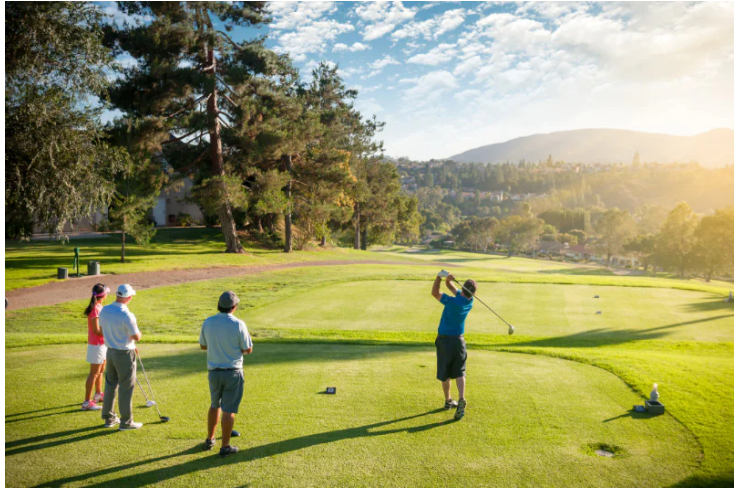
Williamsburg, VA is a playground for golf aficionados. And if you have yet to fall in love with the sport, the city will make you. Home to some of the best golf courses in the Mid-Atlantic, you will have plenty of opportunities to learn under the tutelage of pros, perfect your swing, and even win a game or two.
Ready to pick your home base? We listed the best golf courses in and around Williamsburg, VA below for you.
1. Golden Horseshoe Golf Club (https://www.colonialwilliamsburghotels.com/golf/)
The undisputed king of golf clubs in Williamsburg, Golden Horseshoe by Colonial Williamsburg Resorts is known to be among the top 100 public golf courses in the country. And you bet that there are several reasons why.
For starters, Golden Horseshoe Golf Club is home to three stunning golf courses. The 18-hole Gold course, which was
recently renovated by Rees Jones, was designed by the master himself, Robert Trent Jones, Sr. It has all the works, from bunkers to water hazards.
Rees Jones also designed his own golf course at Golden Horseshoe: the 18-hole Green course. It was opened in 1991 and takes inspiration from his father’s design sensibilities. It’s a classic parkland course that’s beginner-friendly although just a little longer than the Gold course.
Golden Horseshoe’s third course is the Spotswood, an exciting 9-hole, par-31 course also designed by the senior Jones. Quick and fun, it’s a great course for players of all skill levels, with just the right amount of challenges.
2. Kingsmill Resort (https://www.kingsmill.com/?utm_source=google.com&utm_medium=web)
Kingsmill, one of Williamsburg’s fine neighborhoods, is also home to two excellent 18-hole golf courses, one of which
takes you by the waterfront and the other deeper into local history. If that’s not a unique golfing experience, we don’t
know what is.
The Riverfront course was designed by golf course architect Peter Dye and has hosted many golf superstars since it was opened. Although scenic with its riverfront location, you’ll encounter several challenges here. This is a great course to try if you feel like you’ve leveled up in skill.
The second course, Plantation, is a 6,432-yard, par-72 course designed by Arnold Palmer with Ed Seay. It’s no less
challenging than Riverfront with its water features and ravines. While you wait for your turn, you can admire the historic remains of the 1736 plantation.
If you’re a Full Golf or National Golf member, you’ll have access to a third golf course: Wood. This exclusive parkland-style course was designed by Tom Clark and is recognized as one of the best golf courses in Virginia.
3. Williamsburg National Golf Club (https://wngc.com/)
At Williamsburg National Golf Club, two distinct golf experiences await you courtesy of Jack Nicklaus and Tom Clark. The best part is both are open to the public, but if you want added perks to enjoy, sign up for a club membership. Now, on to the courses…
Jack Nicklaus designed an 18-hole championship golf course named after the historic site that inspired it: Jamestown. Don’t be afraid of this par-72 and nearly 7,000-yard golf course— it’s beginner-friendly and offers just enough challenges to excite more advanced players.
The next course is the Yorktown course, where you’re sure to test your mettle. Classic but with a few modern twists, the course features surfaces different from the Jamestown course, with the back nine offering some of the most exciting plays at Williamsburg National Golf Club.
4. Colonial Heritage Golf Club (https://www.colonialheritageclub.com/)
One of the ideal places to skill up, Colonial Heritage Golf Club offers lots of support to beginners and even more skilled players. If you’re not yet ready for the course, spend some time at the practice facility, which comes complete with a bunker and chipping greens. You can also sign up for golf lessons with Colonial Heritage Golf Club’s Certified PGA golf instructors.
From the practice facility, move on to the 18-hole, par-72 championship golf course designed by Arthur Hills. Covering 175 acres and 6,889 yards, the course has everything: water features, bunkers, and fairways that blend well with the natural topography.
After your game, you’re welcome to relax at the Clubhouse. You can sit for post-golf cocktails at the veranda with your buddies and have a spot of lunch or dinner care of Colonial Heritage Golf Club’s in-house chef and their team. If you’re more of a quick-bites kind of person, there’s a snack bar which is reputed to have the best sandwich in all of
Williamsburg.


 Facebook
Facebook
 X
X
 Pinterest
Pinterest
 Copy Link
Copy Link
